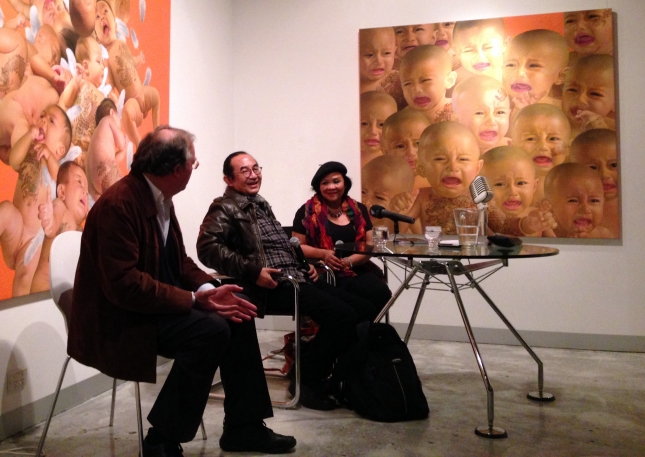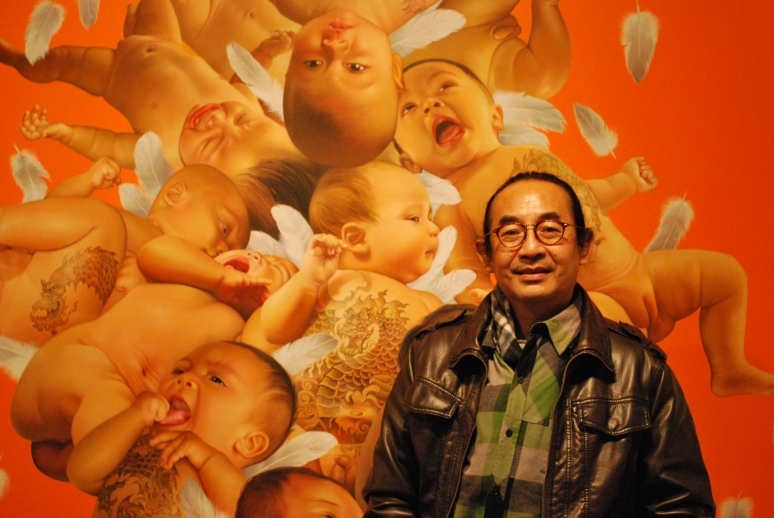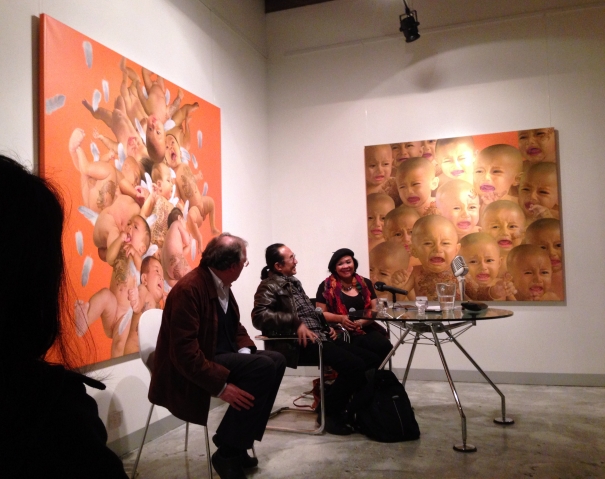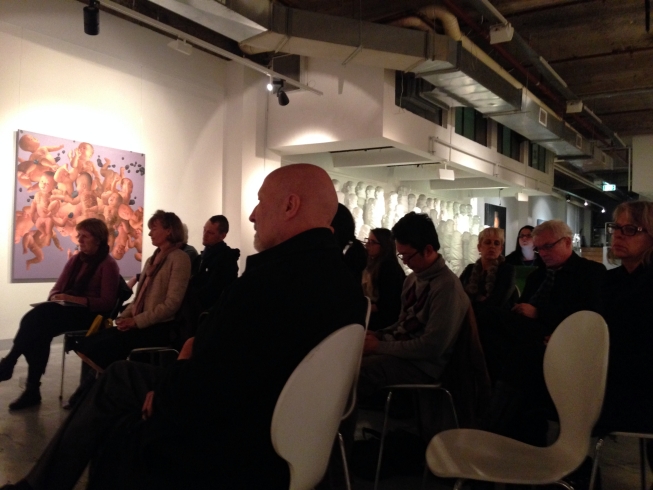Talk with Haris Purnomo at MiFa Gallery, Melbourne

The inevitable destiny of every artists is to be know from the wide public just for a single artwork or an aspect of their more extensive production.
Duchamp is for everyone “the guy of the urinal”, Damien Hirst is the chap who did the shark, Eric Clapton is Layla’s ex boyfriend and so on..
If I say Haris Purnomo, what comes to your mind?
Babies with tattoos, of course.
Haris has painted babies with tattoos for almost 22 years – becoming one of the most popular Indonesian artists in the meantime.
The last solo show of Haris Purnomo “Beyond the Mirror Stage” at the Mifa gallery in Melbourne, Australia, has just finished.
The day of the finissage – you say “finissage” only in Italy and France, what a ridiculous name for “closing”! – the gallery Mifa decided to host a talk with the artist.
It was an interesting talk of 45 minutes with the SBS radio presenter Sri Dean and with frequent interventions from the public. The discussion was focused on the symbols used by the artist and his way of working.
So, as many suspected, the tattooed babies were not just babies with crazy parent that woke up one day and decided to tattoo dragons all over their creature’s little bodies.
In the beginning the artist started painting babies because, as he said, “they are cute”, but he soon realized they could be an effective symbol for the Indonesian lower class.
That social engagement is not surprising from Haris.
Looking at the artist’s background, it’s clear that he is not painting his subjects for moving tender mums’ hearts.
At the end of the seventies Haris Purnomo was member of the Gerakan Seni Rupa Baru, the New Art Movement, and of PIPA, two innovative art movements from Indonesia that challenged Suharto’s power and the preexisting aesthetic.
During the talk a student from the Victoria Art College asked the artist about his experience as an artist during Suharto’s regime. This interest of the new generations in the recent past of Indonesia is extremely positive.
When asked if under Suharto the artists felt more inspired to create work, Haris replied that they felt more reactive than creative. His attitude is not changer throughout the years.
His super-accurate realistic technique has evolved from a purely realistic style to a symbolic style, close to surrealism.
At the end of the talk Haris revealed that he was moving into something else, stopping to use babies as symbols. At the last ART/JOG, the art fair of Yogyakarta, he already started to depict new subjects, like girls and old men.
I’m very curious to see the new directions his work will take.






